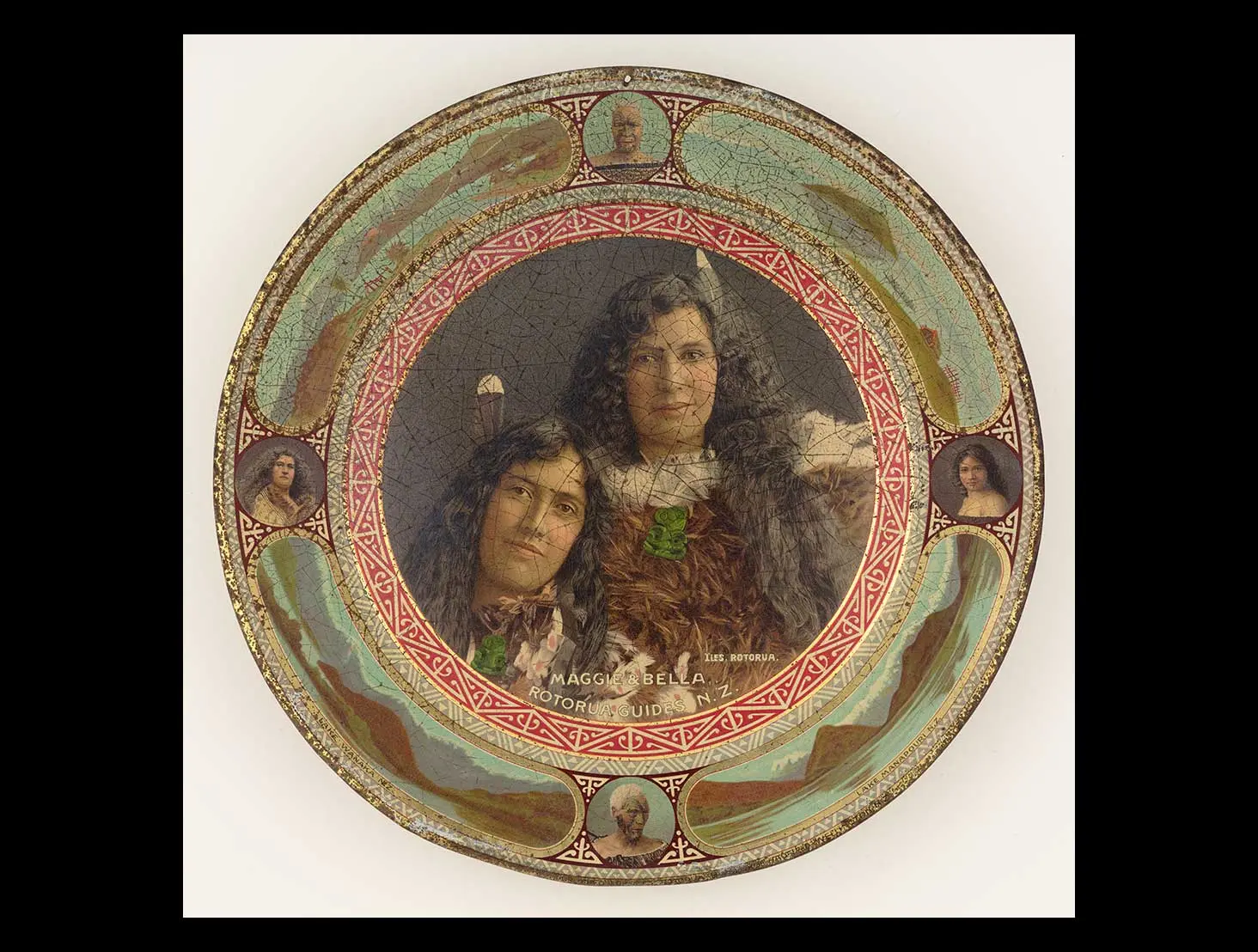Read a story about early Māori-led tourism
From its inception, tourism in Aotearoa New Zealand has been founded on the beauty of the land and the uniqueness of tangata whenua, the Māori people. Both elements come together in this early twentieth-century tourist memento.
The two women portrayed as this plate’s centrepiece, the sisters Maggie and Bella Papakura (Te Arawa, English; 1873–1930 and 1870?–1950, respectively), were renowned guides at the Whakarewarewa thermal village, a centre for Māori-led tourism from the late nineteenth century. According to legend, Maggie, who was born Margaret Pattison Thom but was also known as Mākereti (Margaret), was standing near the Papakura Geyser when visitors asked her what her ‘real’ name was. She responded ‘Maggie Papakura’. The name stuck and was also adopted by Bella and their brother Tiki (Dick).
The two women’s whakapapa embodied the history of contact between Māori and Pākehā. Their mothers, Rakera Ihaia and Pia Ngarotu Te Rihi, had relationships with their father, William Arthur Thom, an English soldier who served with the Waikato Militia and the Armed Constabulary in the New Zealand Wars. The constabulary fought alongside Māori from Te Arawa, including Ngāti Wāhiao of Tūhourangi, the two mothers’ hapū.
Although many guides were well known, Mākereti’s entrepreneurship took her fame to another level, spread through the sale of portraits commissioned from photographers, such as the image here. Her international reputation soared further in 1909, when she took te ao Māori to the world, leading a cultural group, including Bella, accompanied by a carved village for exhibition on a tour of Australia. Her group’s second Australian tour in 1910 extended to Britain for the Festival of Empire and the coronation of King George V in 1911.
In 1912, Mākereti returned to England to marry Richard Staples-Browne, a wealthy landowner she had met when he visited Rotorua. After the couple divorced in 1924, Mākereti enrolled at Oxford University, less than a decade after women were admitted as students. There, she opted to study the new discipline of anthropology, selecting her own people as her topic.
Mākereti died suddenly in 1930, aged 56. Her unfinished thesis was published posthumously as The Old-time Maori (1938). Her grave at Oddington in Oxfordshire is a site of pilgrimage for visitors from New Zealand, keen to see the last resting place of the woman once so famous that mail addressed to ‘Maggie, New Zealand’ would reach her.
Story written by: Paul Diamond
Copyright: Turnbull Endowment Trust
Find out more
Read connected stories from Te Kupenga:
Explore the Alexander Turnbull Library collections further:
Topic Explorer has:
Many Answers has Tourism (New Zealand).
Want to share, print or reuse one of our images? Read the guidelines for reusing Alexander Turnbull Library images.
Curriculum links
